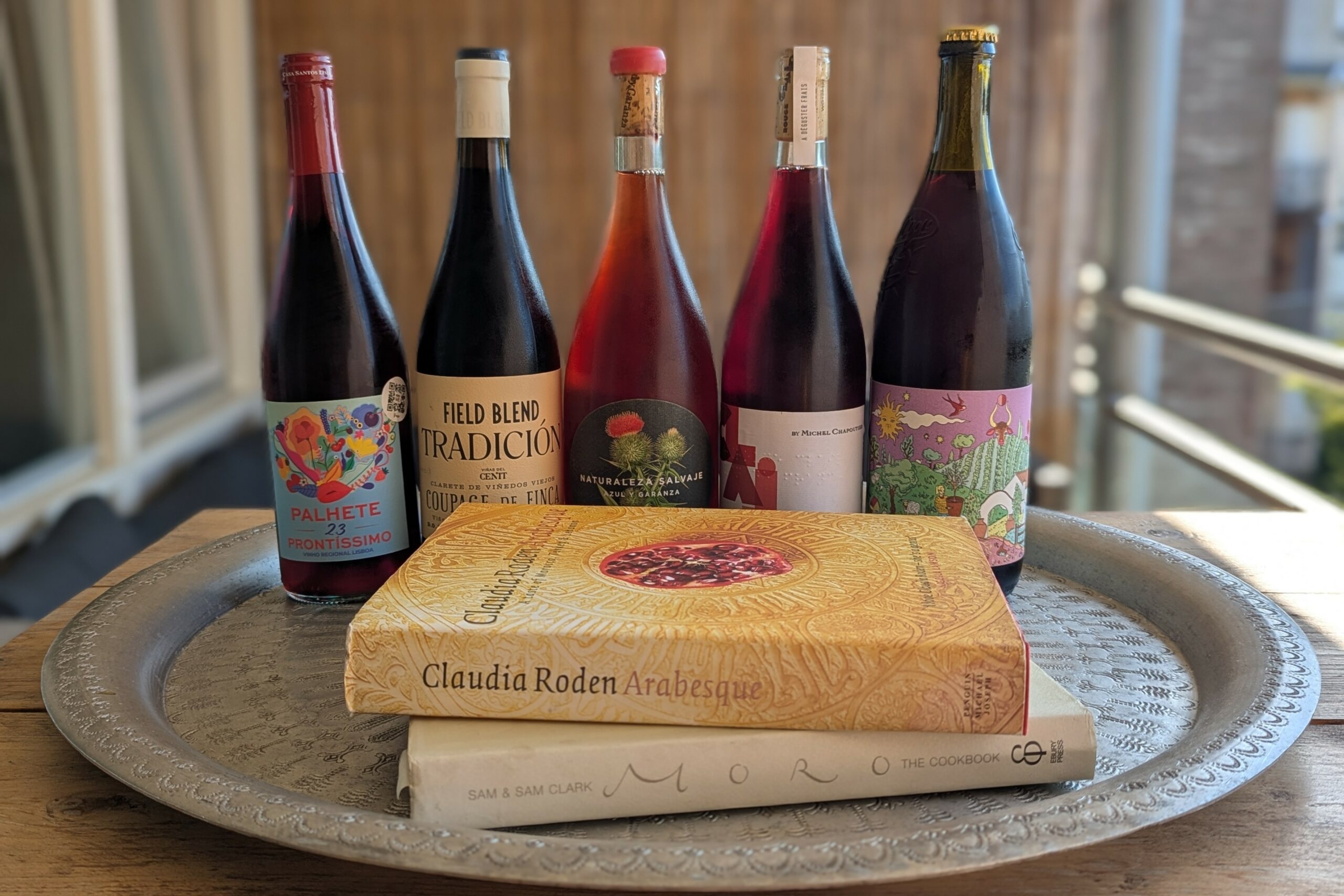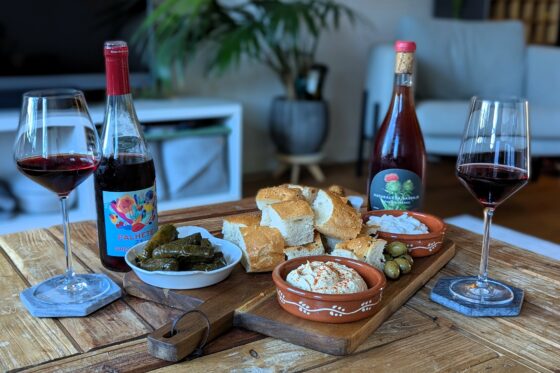Wine Watch: Heritage reds for autumn that drink like rosé
Vicky Hampton
Each month, our resident wine expert, Vicky Hampton, shares her seasonal wine picks for those on a budget and those with a little more cash to splash. October’s column covers categories that may be unfamiliar to many – Clarete and Palhete – but are ideal for in-between seasons.
As I write this, we’re being treated to the last few days of Indian summer. It may be dark by eight o’clock, but we sit outside straight after work, enjoying a chilled glass of wine and some mezze-style snacks with the sun so low in the sky it makes us squint. This could well feel like a distant memory by the time this column comes out, but let’s agree we’re in a kind of liminal phase – suspended between late summer and real autumn.
As such, the wine I want to drink needs to occupy that same phase. Enter Clarete and Palhete: categories you might never have heard of, but I predict are going to become a lot more popular in the next couple of years (if for no other reason than me banging on about them). Put simply, these wines sit somewhere between a rosé and a red: they’re lighter in both colour and extraction than regular, fuller reds – often fresh, chillable, lower in alcohol, and as good on their own as they are with food.
What’s in a name
Before we get stuck into this month’s bottle picks, it’s worth taking a brief look at where these terms come from, and how these wines are made. The term Clarete comes from the French word Claret, originally used by the English to describe the pale, lighter-coloured red wines of Bordeaux in the Middle Ages. Over time, Bordeaux wines became darker, and the term fell out of use there.
In Spain, particularly in Ribera del Duero and Cigales, Clarete remains a recognised style, traditionally made by co-fermenting red and white grapes. In Portugal, too, Clarete is an ancient style used to describe pale reds, while Palhete wines are also blends of red and white grapes, often from old vines.
While there are subtle differences between these styles, the names (“clarete”, “palhete”, “clairet”) all share the same etymological roots (from “clear”, “light”, etc.) but have evolved differently in different wine cultures over time.
Heritage revival
While these styles were popular several centuries ago, they fell largely out of favour with the modern wine drinker. The trend for high-tannin, oaked reds over many of the last few decades meant that Clarete and Palhete wines simply weren’t commercially viable outside their regions of origin. But now – with consumers in general favouring chillable reds with less oak, lighter alcohol and more focus on heritage – these wines are seeing a revival.
They’re also offering something “new” in a market that’s typically been prone to stuffiness and a rigid adherence to tradition. The mix of red and white grapes – often in field blends (which means all sorts of grape varieties being picked and fermented at the same time) – lend Clarete and Palhete wines a freshness, complexity and aromatic intensity that can be quite different to the reds and rosés you’re used to.
A note on availability
I’ll admit it wasn’t that easy to source a huge range of these wines in the Netherlands – this isn’t a category you’ll see in supermarkets. Yet. But I’d be surprised if we didn’t find far more of these light, chillable, blushing reds in the shops over the next year or two.
In part because of this lower availability, I’ve broken away from my usual price categories: the best wines I tasted were all under €14 and I didn’t discover anything I’d buy again at a higher price point. Instead, I decided to bring you my top tips from Portugal, Spain and France respectively.

Portugal: Palhete Prontissimo 2023 (€7.99)
A dangerously easy-drinking wine from Portugal’s Lisboa region, this Palhete is a traditional field blend of (unspecified) red and white grapes, made with minimal intervention and coming in at only 11% alcohol. It gives fruity aromas of red cherry and pomegranate, floral aromas of rose petals, and herbal aromas of bay leaves.
While it has a pleasantly chewy texture, the wine is so fresh and fruit-forward that I’d rather drink it chilled by itself than with a meal. But if you do want to serve it with food, light mezze-style snacks would work best.
Available at Grapedistrict from stores nationwide (unless I clear out their entire stock).
Spain: Cénit Field Blend Clarete Tradición 2023 (€13.70)
Another field blend – this time from northern Spain’s large, landlocked Castilla y León region – made up of white and red grapes, including Tempranillo and Garnacha, harvested from vineyards that are between 80 and 120 years old.
This Clarete is far darker, fuller and boozier than my first recommendation, spending six months in oak barrels and coming in at 14% alcohol. It’s also spicy – think black and pink peppercorns overlaying the red fruit – putting this bottle very much into the “food wine” category. It would cut through the richness of a porchetta sandwich or a fruity duck dish with ease and elegance.
Available online from Decantálo.
France: M. Chapoutier Rouge Clair 2024 (€11.99)
Not technically a Clarete or a Palhete, this French biodynamic red comes from the Rhone Valley, made up of 80% Grenache and 20% Syrah grapes. But its ultra-light blush colour, fruity hit of strawberries and raspberries, low ABV (11.5%) and tongue-tinglingly peppery acidity put it very much into the “Clairet” category. Again, this would make a lovely aperitif wine – with or without snacks – and it’s great value at this price point.
Available at Gall & Gall from stores nationwide.
For more of Vicky’s wine recommendations and grape explorations, follow @TrufflesandTannins on Instagram or subscribe to The Wine Edit on Substack!
Thank you for donating to DutchNews.nl.
We could not provide the Dutch News service, and keep it free of charge, without the generous support of our readers. Your donations allow us to report on issues you tell us matter, and provide you with a summary of the most important Dutch news each day.
Make a donation